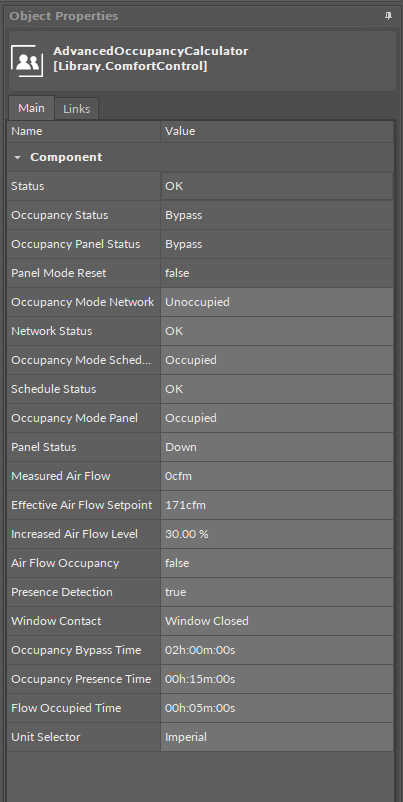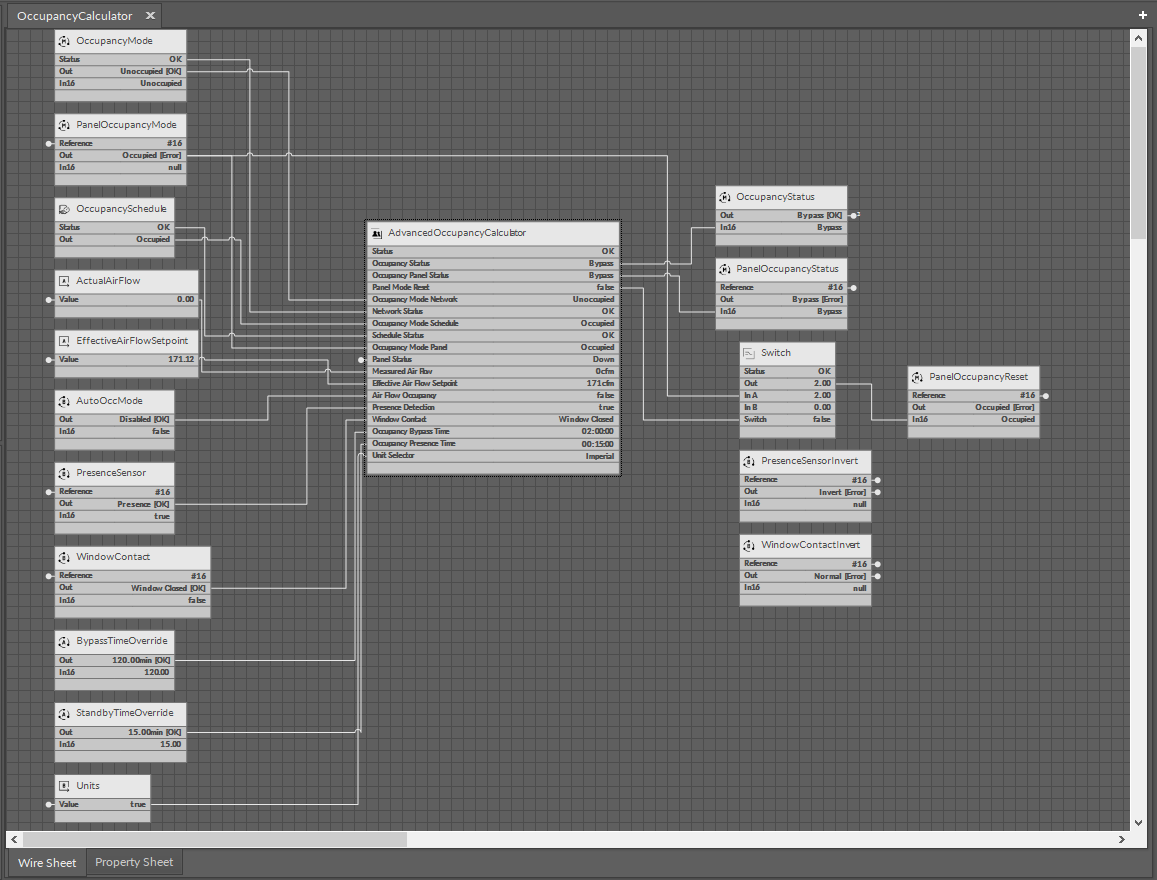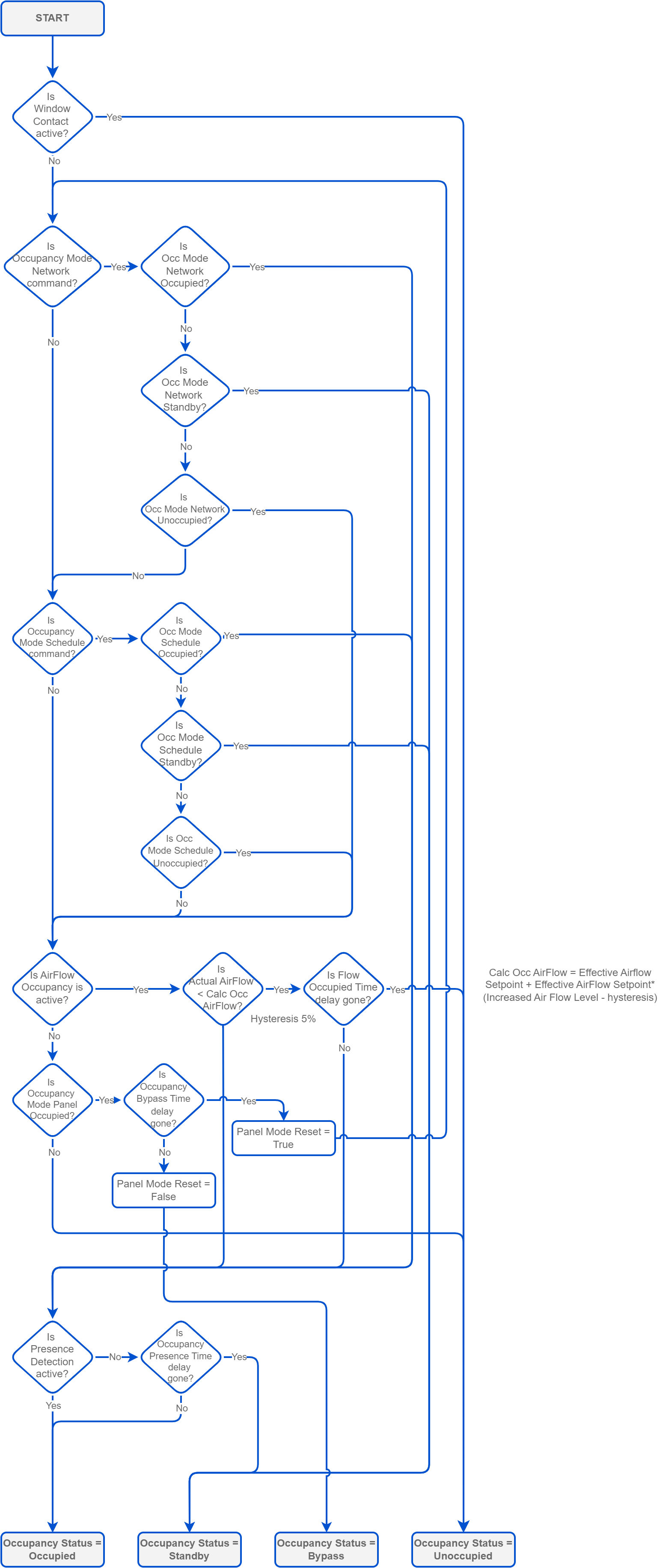AdvancedOccupancyCalculator
Applicable to OS V1.7
The AdvancedOccupancyCalculator component determines the room occupancy status based on input signals from the window contact, presence detector, local schedule, BMS network variable, and airflow detection. The component also allows the auto occupancy function, which determines the occupancy status (occupied/unoccupied) based on the comparison of the measured airflow and the effective airflow setpoint.

AdvancedOccupancyCalculator slots
The AdvancedOccupancyCalculator component has the following slots:
Status: informs about the status of the component; if one of the Status-type slots in the component (Network Status/Schedule Status/Panel Status) or Presence Detection/Window Contact slot has a null value, then the status is fault;
Available statues: OK, Fault, Disabled, Unlicensed, Down, Error;
Occupancy Status: calculates the occupancy status resulting from the values of window contact, present motion, network occupancy, schedule occupancy, airflow detection, and panel button override;
Occupancy Panel Status: (only for panel) calculates the occupancy status resulting from the values of window contact, present motion, network occupancy, schedule occupancy, airflow detection, panel button override;
Panel Mode Reset: resetting the panel's occupancy mode after deactivating the occupancy mode which was forced by the room panel;
Occupancy Mode Network: receives the occupancy status from the BMS or AHU system;
Network Status: shows the status of the BMS or AHU system; if it is OK then the Occupancy Mode Network is used, otherwise, it is ignored;
Occupancy Mode Schedule: receives the occupancy status from the local schedule;
Schedule Status: receives the status of the local schedule; if it is OK then the Occupancy Mode Schedule is used, otherwise, it is ignored;
Occupancy Mode Panel: receives the occupancy status from the local panel, activates the Bypass mode (temporarily occupied); overridden function works if the Occupancy status is other than occupied;
Panel Status: shows the status of the local panel; if it is OK then the Occupancy Mode Panel is used, otherwise, it is ignored;
Measured Air Flow: receives the currently measured airflow value;
Effective Air Flow Setpoint: receives the value of the effective airflow setpoint;
Increased Air Flow Level: specifies the value by which the airflow must increase compared to the setpoint value to change the occupancy mode to occupied in the auto occupancy function;
Air Flow Occupancy: if set to true, allows enabling the auto occupancy function;
Auto Occupancy
The auto occupancy function changes the occupancy status between occupied and unoccupied by comparing the Measured Airflow value with the Effective Airflow Setpoint value. If the measured airflow is higher than the effective airflow setpoint by the Increased Airflow Level value.
Presence Detection: specifies if the presence sensor is available and active;
Window Contact: receives the window open/close state from the connected contact switch (if available);
Occupancy Bypass Time: specifies the time to maintain the Bypass mode (temporarily occupied); after the time expires, the occupancy mode returns to standby;
Occupancy Presence Time: specifies the time to maintain the Occupied mode after motion has been detected; after the time expires and no motion is detected, the occupancy mode returns to a previous state;
Flow Occupied Time: specifies the delay time to change from Occupied to Unoccupied state after reducing airflow;
Unit Selector: allows to set the unit type.

AdvancedOccupancyCalculator in the application

